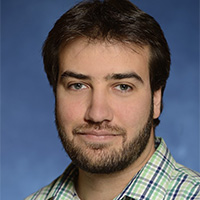February 28, 2023 @ 4:30 pm - 5:30 pm

Join us in celebrating the Don P. Giddens Inaugural Professorial Lecture recognizing Jaafar El-Awady as a full professor in the Department of Mechanical Engineering. Tuesday, Feb. 28 at 4:30 in the Glass Pavilion
Title: The Shaky Word of Deformation and Fracture in Metals
Register: https://www.eventbrite.com/e/inaugural-professorial-lecture-jaafar-el-awady-tickets-514070347247
A livestream will be available on the Johns Hopkins Engineering YouTube channel for those who cannot attend in person.
Jaafar El-Awady is recognized for furthering the fundamental understanding of the underlying deformation mechanism in materials. A winner of a 2018 Johns Hopkins University Catalyst Award, he creates cutting-edge, multi-scale computational methods and experimental techniques necessary to develop next-generation materials for aerospace, naval, automotive, and energy applications.
Description of “The Shaky Word of Deformation and Fracture in Metals”: Plastid deformation and fracture in metals is governed by complex interactions and evolution of different underlying defects in the material. The activation of these mechanisms and their evolution induces characteristic stress waves that traverse the material and can be measured on its surface through acoustic emission (AE) measurements. This is analogous to how earthquakes are measured on the Richter scale. Interestingly, each deformation mechanism in metals has a unique acoustic AE “signature,” and thus, AE measurements could in theory be utilized to reconstruct a three-dimensional (3D) view of the time-evolution of deformation and failure in metals. Here, we present our recent developments in coupling AE measurements with in-situ micromechanical testing inside a scanning electron microscope (SEM) to gain an unprecedented understanding of deformation and fracture in metals. By continuously recording the generated AE signals simultaneously with load-displacement measurements, correlations were found between the AE wave characteristics and different deformation stages. Finally, we will also show our ongoing efforts in combining forward modeling and machine learning of deformation in metals to enable decoding the 3D underlying deformation mechanisms from such AE measurements.




